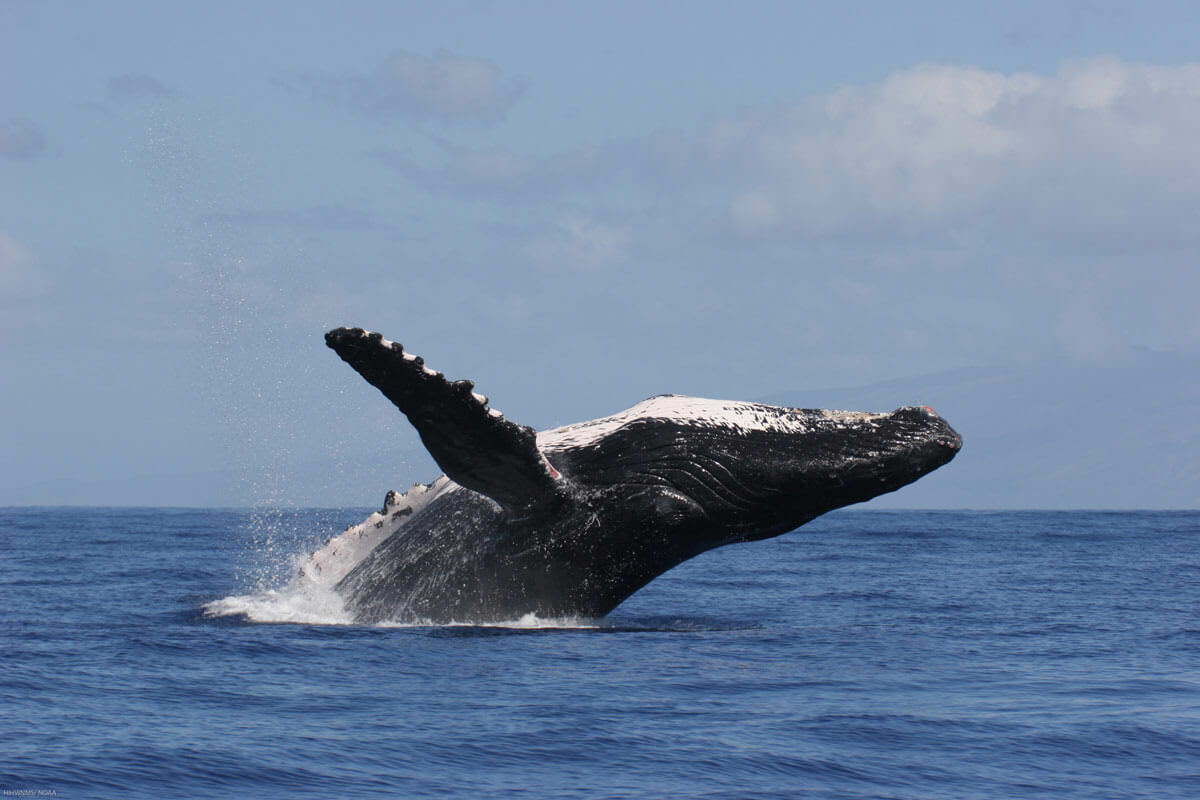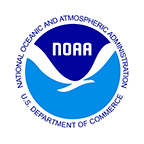Boating Guidelines

Thousands of humpback whales visit Hawaiian waters every year from November through May. These acrobatic, 45-ton marine mammals attract wildlife enthusiasts, but they can pose safety hazards for boaters. Vessel-whale collisions occur every year in Hawai‘i and are a serious risk to boaters and whales. Ocean users are also subject to safety risks when whales surface, breach, or slap their massive tails or flippers.
Humpback whale season in Hawai‘i generally runs from November through May, although whales may be encountered in limited numbers during other months. The usual peak in humpback abundance occurs from January through March.
Humpback whales congregate in ocean waters less than 600 feet deep throughout the main Hawaiian Islands. Keep in mind, however, that mariners may also encounter humpback whales at the surface over deeper waters.
It is illegal to approach within 100 yards of a humpback whale.
How to avoid colliding with or disturbing whales
Keep a sharp lookout: Always stay vigilant for whales and other collision hazards. Look out ahead for “blows” (puffs of mist), dorsal fins, tails, etc. Post at least one dedicated whale lookout in addition to the vessel operator from November through May.
Watch your speed: Travel at a slow, safe speed in areas where you may strike a whale. This speed depends on vessel type, time of day, sea conditions, and other factors that affect whale detection and avoidance. Research shows that collisions occurring at vessel speeds above 10 knots cause more whale deaths and serious injuries than collisions occurring at slower speeds.
Stay at the helm: Keep your hands on the wheel and throttle at all times, and be ready to take action immediately to avoid a whale in your path.
Keep your distance: Once whales are sighted, stay more than 100 yards away. It is illegal to approach within 100 yards of a humpback whale
Stop if you’re too close: Stop immediately if you are within 100 yards of a humpback whale. Leave engines running and out of gear (in neutral) until the whale moves away.
Go around whales from behind: If you encounter whales in your path, go around them from behind while maintaining more than 100 yards distance. Do not attempt to run out in front of whales to get past them.
Warn other vessels: If you spot a whale, use the appropriate VHF radio protocol or other means to alert other vessels that may not be aware of whales in their path.
Don’t assume the whales can see you: Whales may not be able to see you, or may not get out of your way. Calves are especially vulnerable since they are curious and may not have learned to be cautious of vessels.
Plan ahead: Be ready for delays in transit due to whale encounters. Avoid nighttime operations if possible.
Alert NOAA: If you are involved in a collision with a whale or see an entangled whale, call the NOAA Hotline: (888) 256-9840. If a phone call is not possible, hail the U.S. Coast Guard on VHF channel 16.
Signs of whale disturbance
Cautiously move away if you observe any of the following behaviors:
- Rapid changes in swimming direction or speed.
- Erratic swimming patterns.
- Escape tactics such as prolonged diving, underwater exhalation, underwater course changes, or rapid swimming away from your location at the surface.
- Female attempting to shield calf with her body or with her movements.
- Sudden stop in important breeding, nursing, feeding, or resting activities after your arrival.
- Abandonment of previously frequented areas.
Report an injured or entangled marine mammal:
NOAA Marine Mammal Hotline, (888) 256-9840.
Suspect a close approach or other violation?
NOAA Fisheries Enforcement Hotline, (800) 853-1964.
The best way to help an animal is to immediately alert authorized, trained, and well-equipped personnel using the above hotlines. Never try to disentangle a whale yourself.

